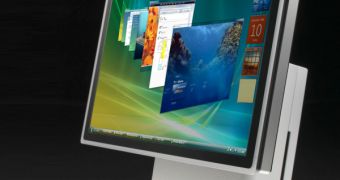The core of Windows is in a process of perpetual evolution, as an integer part of the growth of the operating system itself. Of course that the core of the operating system is a reference pointing to the kernel, the central unit of the platform providing low-level functions. And as Microsoft prepares to deliver the third and final service pack for Windows XP and the first service pack for Windows Vista, the heart of the platform will also move ahead. The Redmond company has already introduced major changes with the Vista and Windows Server 2008 kernel, in comparison to XP and Windows Server 2003.
The latest versions of the Windows operating systems, both client and server, brought to the table enhancements impacting memory and heap handling, the overall management mechanisms for application support and power consumption, but also added security mitigations and the Hardware Abstraction Layer. In early 2008, Microsoft is getting ready to release XP SP3 and Vista SP1. Now, SP3 is just a standard refresh for XP and, in this respect, the kernel will remain virtually untouched. The Vista kernel is an entirely different matter altogether. The kernel of the latest Windows operating system is a snapshot of the Windows Server core. In this context, Vista SP1 will almost completely align the Vista kernel to that of Windows Server 2008. Both Vista SP1 and Windows Server 2008 are planned for RTM in February 2008.
"Kernel changes - enhancements in Server 2008 and Vista. Security - service hardening has evolved a little bit from Vista into Server 2008 - least privileges; new networking protocol in SMB 2 which requires Vista and Server 2008 to work; overcomes limitations of original SMB protocol which was developed 15 years ago e.g. It assumes certain data transmission characteristics which don't make sense any more like small buffers - 60k packet size; WAN optimisation where there is latency between hosts - batching now takes place to reduce the number of round trips required", revealed James Senior, Microsoft U.K Partner Technical Specialist.
But Senior went on to also describe the changes affecting the Transactional File System and Transactional Registry: "Used by Windows Update to apply patches, so the update is protected in a transaction. When it makes some changes to files and registry these are recorded by the transactions which provides guarantees that even if there is power interruption the files and registry will not be corrupted by the update being only partially written. Changes go into a log and when the transaction is committed all the changes are applied in one go rather than incrementally."
In parallel with the development of Vista SP1 and XP SP3, Microsoft is also working on MinWin. Microsoft Distinguished Engineer Eric Traut presented MinWin in 2007 as a stripped down version of the current Windows Kernel. MinWin weighs in at just 25 MB and is capable of running with just 4g MB of RAM. But, Traut promised that MinWin will get even slimmer. At this point in time, MinWin is the smallest version of Windows in existence, and the true core-component of the Windows operating system. MinWin will be reduced to a minimum independent footprint that will have absolutely no dependencies in the rest of Windows. And of course, MinWin will act as the kernel of Windows 7, the successor of Windows Vista.

 14 DAY TRIAL //
14 DAY TRIAL //